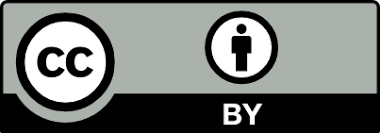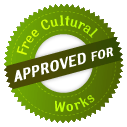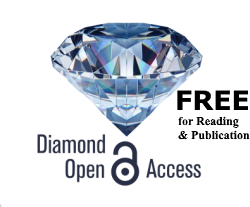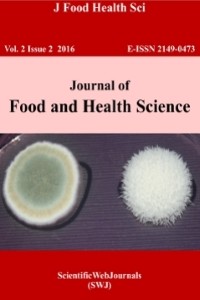Abstract
References
- Altaş, L., & Büyükgüngör, H. (2007). Heavy metal pollution in the Black Sea shore and offshore of Turkey. Environmental Geology, 52, 469-476.
- Anonymous, (1995). Official Gazette of Republic of Turkey. Acceptable levels for chemical and microbiological contaminants in fresh, chilled, frozen and processed fish. (Notification No: 95/6533, Issue: 22223) (in Turkish).
- Aral, O. (1999). “Growth of the Mediterranean Mussel (Mytilus galloprovincialis Lam. 1819) on Ropes in the Black Sea”. Turkey. Turkish Journal of Veterinary and Animal Sciences, 23, 183-189.
- Ateş, A.S., (1999). Liocarcinus depurator (Linnaeus, 1758) and Brachynotus sexdentatus (Risso, 1827) (Decapoda, Brachyura), Two New Records for the Turkish Black Sea Fauna. Turkish Journal of Zoology, 23, 115-118.
- Ayas, D., (2013). Effects of Gender and Season on Potentially Toxic Metal Levels in Muscles of Adult Blue Swimmer Crabs (Portunus pelagicus) from the Northeastern Mediterranean Sea. Journal of Marine Biology & Oceanography, 2(2), 1-4.
- Aydın, M., Karadurmuş, U., & Mutlu, C., (2013). Ordu İli Kıyılarında Bulunan Liocarcinus depurator (Linnaeus, 1758) (Brachyura: Portunidae) Yengeç Türünün Boy-Ağırlık İlişkisi ve Kondisyon Faktörü Üzerine Bir Çalışma. Karadeniz Fen Bilimleri Dergisi, 3(8), 112-121.
- Bakan, G., Özkoç, B. H., Tülek, S., & Cüce1, H. (2010) Integrated environmental quality assessment of the Kızılırmak River and its coastal environment. Turkish Journal of Fisheries and Aquatic Sciences 10, 453-462.
- Bat, L., Gündoğdu, A., Öztürk, M., & Öztürk, M. (1999). Copper, zinc, lead and cadmium concentrations in the Mediterranean mussel Mytilus galloprovincialis Lamarck 1819 from Sinop coast of the Black Sea. Turkish Journal of Zoology, 23, 321-326.
- Bat, L., Gönlügür, G., Andaç, M., Öztürk, M., & Öztürk, M. (2000). Heavy Metal concentrations in the Sea Snail Rapana venosa (Valenciennes, 1846) from Sinop Coasts of the Black Sea. Turkish Journal Marine Sciences, 6(3), 227-240.
- Bat, L., Erdem, Y., Ustaoğlu, S., Yardım, Ö., & Satılmış, H.H. (2005). A Study on the Fishes of the Central Black Sea Coast of Turkey. Journal of Black Sea/ Mediterranean Environment, 11(3), 287-302.
- Bat, L., Gökkurt, O., Sezgin, M., Üstün, F., & Sahin, F. (2009). Evaluation of the Black Sea land based sources of pollution the coastal region of Turkey. The Open Marine Biology Journal, 3, 112-124.
- Bat, L., Üstün F., & Gökkurt-Baki, O. (2012). Trace Element Concentrations in the Mediterranean mussel Mytilus galloprovincialis Lamarck, 1819 Caught from Sinop Coast of the Black Sea, Turkey. The Open Marine Biology Journal, 6, 1-5.
- Bernhard, M. (1976). Manual of Methods in the Aquatic Environment Research. FAO Fisheries Technical Paper FIRI/T no.158, Food and Agriculture Organisation, Rome.
- Codex Alimentarius Commission (1995). Doc. no. CX/FAC 96/17. Joint FAO/WHO food standards programme. Codex general standard for contaminants and toxins in foods.
- Commission Regulation (EC) (2006). Official Journal of the European Union. Setting maximum levels for certain contaminants in food stuffs. Commission Regulation (EC) No 1881/2006: 364, 5-24.
- Council of Europe (2001). The Guidelines on metals and alloys used as food contact materials are part of the Council of Europe’s policy statements concerning materials and articles intended to come into contact with foodstuffs.
- Dural. M., Lugal Göksu, M.Z., Özak. A.A., & Derici. B. (2006). Bioaccumulation of some heavy metals in different tissues of Dicentrarchus labrax L. 1758. Sparus aurata L. 1758 and Mugil cephalus L. 1758 from the Çamlık lagoon of the eastern coast of Mediterranean (Turkey). Environmental Monitoring and Assessment, 118, 65-74.
- FAO, (2010). Statistics Division Food Security Statistics, Food Consumption. [Cited 21 June 2010]. Available from: http://www.fao.org/fishery/statistics/global-consumption/en
- WHO, (2011). Evaluation of certain food additives and contaminants: seventy-third report of the Joint FAO/WHO Expert. (WHO technical report series; no. 960). Meeting 73rd: 2010, Geneva, Switzerland, ISBN 978 92 4 120960 1. Available from: http://apps.who.int/iris/bitstream/10665/44515/1/WHO_TRS_960_eng.pdf
- Förstner, U., & Wittmann, G.T.W. (1983). Metal pollution in the aquatic environment. Second Revised Edition. Springer-Verlag, Berlin. 486 pp. ISBN-13: 978-3-540-12856-4
- Freire, J. (1996). Feeding ecology of Liocarcinus depurator (Decapoda: Portunidae) in the Ria de Arousa (Galicia, north-west Spain): effects of habitat, season and life history. Marine Biology, 126(2), 297-311.
- Kurt, P., & Özkoç Böke, H. (2004). A Survey To Determine Levels Of Chlorinated Pesticides And PCB’s In Mussels And Seawater From The Mid Black Sea Coast of Turkey, Marine Pollution Bulletin 48, 1076-1083.
- Lok, A., Metin, G., Acarlı, S., & Goulletquer, P. (2010). Harmful Algal Blooms (HABs) and Black Mussel Mytilus galloprovincialis (Linnaeus, 1758) Culture in Izmir Bay (Iskele-Urla)-Turkey: Preliminary Results on the Annual Feeding Cycle Using a Qualitative Approach. Turkish Journal of Fisheries and Aquatic Sciences 10, 527-536.
- MAFF (1995) Monitoring and surveillance of non-radioactive contaminants in the aquatic environment and activities regulating the disposal of wastes at sea, 1993. Directorate of Fisheries research, Lowestoft, Aquatic Environment Monitoring Report, No.44.
- Mol, S., & Üçok Alakavuk, D. (2011). Heavy Metals in Mussels (Mytilus galloprovincialis) from Marmara Sea, Turkey. Biological Trace Element Research, 141, 184-191.
- Mülayim, A., & Balkıs, H. (2015). Toxic metal (Pb, Cd, Cr, and Hg) levels in Rapana venosa (Valenciennes, 1846), Eriphia verrucosa (Forskal, 1775), and sediment samples from the Black Sea littoral (Thrace, Turkey). Marine Pollution Bulletin, 95, 215-222.
- National Academy of Sciences, (1989) Recommended Dietary Allowances. 10th Edition, 298 p., National Academy Press Washington, D.C.
- Özden, Ö., Erkan, N., & Ulusoy, Ş. (2010). Study on the Behavior of the Trace Metal and Macro Minerals in Mytilus galloprovincialis as a bioindicator species: the case of Marmara Sea, Turkey. Journal für Verbraucherschutz und Lebensmittelsicherheit, 5(3-4), 407-412.
- Pınarlı, V., Onar, A. N., Özkoç, H.B., & Büyükgüngör, H. (1991). Pollution in Samsun Coast of Black Sea. The Black Sea Symposium, Istanbul, 16-18 Sept. In: Proceedings of the Black Sea Symposium Ecological Problems and Economical Prospects, 127-136 pp.
- Sunlu, U. (2006) Trace metal levels in mussels (Mytilus galloprovincialis L. 1758) from Turkish Aegean Sea coast. Environmental Monitoring and Assessment, 114, 273-286.
- TUIK, (2014). Turkish Fishery Statistics. http://www.turkstat.gov.tr/UstMenu.do?metod=temelist Accessed 9.12.2014.
- Turkish Food Codex (TFC), (2008). Official Gazette of Republic of Turkey. Notifications about maximum levels for certain contaminants in foodstuffs. Turkish Food Codex (Notification No: 2008 / 26, Issue: 26879) (in Turkish).
- Underwood, E.J. (1977). Trace elements in human and animal nutrition. 4th edition, Academic Press, New York. 545 pp. ISBN: 978-0-12-709065-8
- UNEP, (1984). Determination of Total Cd, Zn, Pb and Cu in Selected Marine Organisms by flameless AAS. Reference Methods for Marine Pollution Studies, 11 Rev 1.
- UNEP, (1985). GESAMP: Cadmium, lead and tin the Marine Environment. UNEP Regional Seas Reports and Studies, no 56, GESAMP Reports and Studies, no 22.
- Zar, J.H. (1984). Biostatistical analysis. Second edition. Prentice Hall, Int., New Jersey. 718 pp. ISBN: 978-0-13-077925-0
HEAVY METALS IN EDIBLE TISSUES OF BENTHIC ORGANISMS FROM SAMSUN COASTS, SOUTH BLACK SEA, TURKEY AND THEIR POTENTIAL RISK TO HUMAN HEALTH
Abstract
The present study was aim to determine the concentrations
of copper,
cobalt, lead, zinc, cadmium, manganese, nickel and iron in the edible tissues
of Liocarcinus
depurator (decapoda), Rapana
venosa (gastropoda) and Mytilus
galloprovincilais (mollusca) collected from Samsun coasts of the Black Sea,
Turkey in 2010. These biomonitor species are major food sources of benthic
ecosystem. Exposing to heavy metals at higher concentrations might be toxic to
demersal fish species and also humans. The concentrations of the metals were
carried out using Flame Atomic Absorption Spectrophotometer (UNICAM 929). Metal
concentrations in L. depurator, R. venosa and M. galloprovincilais
decrease in the order: Fe > Zn > Mn > Cu > Ni > Pb > Co >
Cd; Fe > Zn > Cu > Pb > Mn > Cd > Ni and Fe > Zn > Cu
> Pb > Mn > Co > Ni > Cd, respectively. The results showed that
the Fe and Zn concentrations were the highest in edible tissues of the three
benthic organisms, respectively. Mn was higher in the edible tissues of L. depurator than those in other
species, while R. venosa and M. galloprovincilais
shows more of Cu and Pb levels. The estimates of EWI and EDI indicated no
health risk as values are lower than the allowed tolerable levels cited by
internationals committees. Based on the above results of this study, metal
accumulation in the biomonitor demersal species study did not exceed the
permissible limits set for heavy metals by FAO/WHO.
Keywords
Liocarcinus depurator Rapana venosa Mytilus galloprovincialis South Black Sea of Turkey Heavy metals Seafood EWI
References
- Altaş, L., & Büyükgüngör, H. (2007). Heavy metal pollution in the Black Sea shore and offshore of Turkey. Environmental Geology, 52, 469-476.
- Anonymous, (1995). Official Gazette of Republic of Turkey. Acceptable levels for chemical and microbiological contaminants in fresh, chilled, frozen and processed fish. (Notification No: 95/6533, Issue: 22223) (in Turkish).
- Aral, O. (1999). “Growth of the Mediterranean Mussel (Mytilus galloprovincialis Lam. 1819) on Ropes in the Black Sea”. Turkey. Turkish Journal of Veterinary and Animal Sciences, 23, 183-189.
- Ateş, A.S., (1999). Liocarcinus depurator (Linnaeus, 1758) and Brachynotus sexdentatus (Risso, 1827) (Decapoda, Brachyura), Two New Records for the Turkish Black Sea Fauna. Turkish Journal of Zoology, 23, 115-118.
- Ayas, D., (2013). Effects of Gender and Season on Potentially Toxic Metal Levels in Muscles of Adult Blue Swimmer Crabs (Portunus pelagicus) from the Northeastern Mediterranean Sea. Journal of Marine Biology & Oceanography, 2(2), 1-4.
- Aydın, M., Karadurmuş, U., & Mutlu, C., (2013). Ordu İli Kıyılarında Bulunan Liocarcinus depurator (Linnaeus, 1758) (Brachyura: Portunidae) Yengeç Türünün Boy-Ağırlık İlişkisi ve Kondisyon Faktörü Üzerine Bir Çalışma. Karadeniz Fen Bilimleri Dergisi, 3(8), 112-121.
- Bakan, G., Özkoç, B. H., Tülek, S., & Cüce1, H. (2010) Integrated environmental quality assessment of the Kızılırmak River and its coastal environment. Turkish Journal of Fisheries and Aquatic Sciences 10, 453-462.
- Bat, L., Gündoğdu, A., Öztürk, M., & Öztürk, M. (1999). Copper, zinc, lead and cadmium concentrations in the Mediterranean mussel Mytilus galloprovincialis Lamarck 1819 from Sinop coast of the Black Sea. Turkish Journal of Zoology, 23, 321-326.
- Bat, L., Gönlügür, G., Andaç, M., Öztürk, M., & Öztürk, M. (2000). Heavy Metal concentrations in the Sea Snail Rapana venosa (Valenciennes, 1846) from Sinop Coasts of the Black Sea. Turkish Journal Marine Sciences, 6(3), 227-240.
- Bat, L., Erdem, Y., Ustaoğlu, S., Yardım, Ö., & Satılmış, H.H. (2005). A Study on the Fishes of the Central Black Sea Coast of Turkey. Journal of Black Sea/ Mediterranean Environment, 11(3), 287-302.
- Bat, L., Gökkurt, O., Sezgin, M., Üstün, F., & Sahin, F. (2009). Evaluation of the Black Sea land based sources of pollution the coastal region of Turkey. The Open Marine Biology Journal, 3, 112-124.
- Bat, L., Üstün F., & Gökkurt-Baki, O. (2012). Trace Element Concentrations in the Mediterranean mussel Mytilus galloprovincialis Lamarck, 1819 Caught from Sinop Coast of the Black Sea, Turkey. The Open Marine Biology Journal, 6, 1-5.
- Bernhard, M. (1976). Manual of Methods in the Aquatic Environment Research. FAO Fisheries Technical Paper FIRI/T no.158, Food and Agriculture Organisation, Rome.
- Codex Alimentarius Commission (1995). Doc. no. CX/FAC 96/17. Joint FAO/WHO food standards programme. Codex general standard for contaminants and toxins in foods.
- Commission Regulation (EC) (2006). Official Journal of the European Union. Setting maximum levels for certain contaminants in food stuffs. Commission Regulation (EC) No 1881/2006: 364, 5-24.
- Council of Europe (2001). The Guidelines on metals and alloys used as food contact materials are part of the Council of Europe’s policy statements concerning materials and articles intended to come into contact with foodstuffs.
- Dural. M., Lugal Göksu, M.Z., Özak. A.A., & Derici. B. (2006). Bioaccumulation of some heavy metals in different tissues of Dicentrarchus labrax L. 1758. Sparus aurata L. 1758 and Mugil cephalus L. 1758 from the Çamlık lagoon of the eastern coast of Mediterranean (Turkey). Environmental Monitoring and Assessment, 118, 65-74.
- FAO, (2010). Statistics Division Food Security Statistics, Food Consumption. [Cited 21 June 2010]. Available from: http://www.fao.org/fishery/statistics/global-consumption/en
- WHO, (2011). Evaluation of certain food additives and contaminants: seventy-third report of the Joint FAO/WHO Expert. (WHO technical report series; no. 960). Meeting 73rd: 2010, Geneva, Switzerland, ISBN 978 92 4 120960 1. Available from: http://apps.who.int/iris/bitstream/10665/44515/1/WHO_TRS_960_eng.pdf
- Förstner, U., & Wittmann, G.T.W. (1983). Metal pollution in the aquatic environment. Second Revised Edition. Springer-Verlag, Berlin. 486 pp. ISBN-13: 978-3-540-12856-4
- Freire, J. (1996). Feeding ecology of Liocarcinus depurator (Decapoda: Portunidae) in the Ria de Arousa (Galicia, north-west Spain): effects of habitat, season and life history. Marine Biology, 126(2), 297-311.
- Kurt, P., & Özkoç Böke, H. (2004). A Survey To Determine Levels Of Chlorinated Pesticides And PCB’s In Mussels And Seawater From The Mid Black Sea Coast of Turkey, Marine Pollution Bulletin 48, 1076-1083.
- Lok, A., Metin, G., Acarlı, S., & Goulletquer, P. (2010). Harmful Algal Blooms (HABs) and Black Mussel Mytilus galloprovincialis (Linnaeus, 1758) Culture in Izmir Bay (Iskele-Urla)-Turkey: Preliminary Results on the Annual Feeding Cycle Using a Qualitative Approach. Turkish Journal of Fisheries and Aquatic Sciences 10, 527-536.
- MAFF (1995) Monitoring and surveillance of non-radioactive contaminants in the aquatic environment and activities regulating the disposal of wastes at sea, 1993. Directorate of Fisheries research, Lowestoft, Aquatic Environment Monitoring Report, No.44.
- Mol, S., & Üçok Alakavuk, D. (2011). Heavy Metals in Mussels (Mytilus galloprovincialis) from Marmara Sea, Turkey. Biological Trace Element Research, 141, 184-191.
- Mülayim, A., & Balkıs, H. (2015). Toxic metal (Pb, Cd, Cr, and Hg) levels in Rapana venosa (Valenciennes, 1846), Eriphia verrucosa (Forskal, 1775), and sediment samples from the Black Sea littoral (Thrace, Turkey). Marine Pollution Bulletin, 95, 215-222.
- National Academy of Sciences, (1989) Recommended Dietary Allowances. 10th Edition, 298 p., National Academy Press Washington, D.C.
- Özden, Ö., Erkan, N., & Ulusoy, Ş. (2010). Study on the Behavior of the Trace Metal and Macro Minerals in Mytilus galloprovincialis as a bioindicator species: the case of Marmara Sea, Turkey. Journal für Verbraucherschutz und Lebensmittelsicherheit, 5(3-4), 407-412.
- Pınarlı, V., Onar, A. N., Özkoç, H.B., & Büyükgüngör, H. (1991). Pollution in Samsun Coast of Black Sea. The Black Sea Symposium, Istanbul, 16-18 Sept. In: Proceedings of the Black Sea Symposium Ecological Problems and Economical Prospects, 127-136 pp.
- Sunlu, U. (2006) Trace metal levels in mussels (Mytilus galloprovincialis L. 1758) from Turkish Aegean Sea coast. Environmental Monitoring and Assessment, 114, 273-286.
- TUIK, (2014). Turkish Fishery Statistics. http://www.turkstat.gov.tr/UstMenu.do?metod=temelist Accessed 9.12.2014.
- Turkish Food Codex (TFC), (2008). Official Gazette of Republic of Turkey. Notifications about maximum levels for certain contaminants in foodstuffs. Turkish Food Codex (Notification No: 2008 / 26, Issue: 26879) (in Turkish).
- Underwood, E.J. (1977). Trace elements in human and animal nutrition. 4th edition, Academic Press, New York. 545 pp. ISBN: 978-0-12-709065-8
- UNEP, (1984). Determination of Total Cd, Zn, Pb and Cu in Selected Marine Organisms by flameless AAS. Reference Methods for Marine Pollution Studies, 11 Rev 1.
- UNEP, (1985). GESAMP: Cadmium, lead and tin the Marine Environment. UNEP Regional Seas Reports and Studies, no 56, GESAMP Reports and Studies, no 22.
- Zar, J.H. (1984). Biostatistical analysis. Second edition. Prentice Hall, Int., New Jersey. 718 pp. ISBN: 978-0-13-077925-0
Details
| Primary Language | English |
|---|---|
| Journal Section | Articles |
| Authors | |
| Publication Date | February 1, 2016 |
| Submission Date | December 10, 2015 |
| Published in Issue | Year 2016Volume: 2 Issue: 2 |
Journal is licensed under a
CreativeCommons Attribtion-ShareAlike 4.0 International Licence 


Diamond Open Access refers to a scholarly publication model in which journals and platforms do not charge fees to either authors or readers.
Open Access Statement:
This is an open access journal which means that all content is freely available without charge to the user or his/her institution. Users are allowed to read, download, copy, distribute, print, search, or link to the full texts of the articles, or use them for any other lawful purpose, without asking prior permission from the publisher or the author. This is in accordance with the BOAI definition of open access.
Archiving Policy:
Archiving is done according to ULAKBİM "DergiPark" publication policy (LOCKSS).


